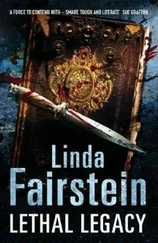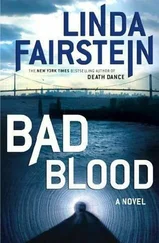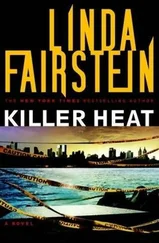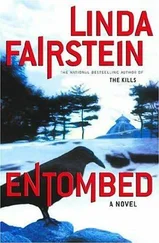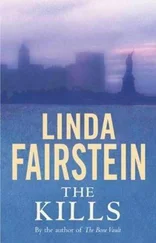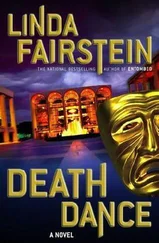“I’m missing something here. You two have figured out who our victim is? You’re not trying to tell me she’s some kind of saint, are you?”
“She’s Saint Cleo to me, working her only little miracle for us. I never thought we’d find anything under those linen wraps. I figured that body would be partially if not fully decomposed. You gotta think the person who put her in that box and stuck a shipping label on it to sit on the blacktop in Newark during the summer heat, or in the hold of a freighter headed for Cairo, wouldn’t have expected there’d be anything left to make a visual ID of his victim.”
“You’ve done the autopsy?” I asked Kestenbaum.
“Later today. But we’ve unwrapped the linen and taken the photos. Mike’s right. The body is completely intact, in remarkable condition.”
“Maybe she just died recently, within the week.”
“Unlikely. I’d say she’s been dead for months, maybe the better part of a year. I’ll have a better idea after I get to work, but the skin has some discoloration and it’s shriveled a bit, the muscles have atrophied, and the lashes on her left eyelid have come out and are stuck to the brow.”
“And she’s dressed in winter clothing, am I right, doc?”
“Yeah. Nothing you’d wear at the end of May. Heavy woolen slacks and a four-ply cashmere sweater with long sleeves and a crewneck.”
Kestenbaum removed a few Polaroid photos from the pocket of his lab coat and passed them to me. I lifted the one on top for a close look and passed the others to Mike.
The young woman stared back at me with a sober expression. It was remarkable to think that she had been dead for any period of time greater than a few days. She appeared to be about thirty years old. Her skin had a strange cast, but I could not tell how much of that was due to the poor quality of the Polaroid shot in the dim light of the morgue basement.
“I’m telling you, Coop, she’s an Incorruptible.”
Her sandy brown hair seemed to be falling out of her scalp, but otherwise, she appeared to be perfectly preserved.
“She’s going to tell us what we need to know. Where she’s been all this time-”
“Any ideas, doc?”
“Think about the way the saints were buried. A number of pathologists have studied these cases, just as religious historians have. Most of the Incorruptibles, before canonization, were interred in burial vaults beneath the altars of churches. Not only was it hallowed ground but it was also cool and the area was often lined with heavy stone. The temperature was usually quite low beneath the floor, even when the seasons changed. That’s what you’re going to be looking for, Mike. Someplace cool and dry that would naturally preserve this body.”
“What happened to her?” I studied her small face, with its high cheekbones and thin, straight nose.
“I’ll work on that. You and Chapman figure out who she is and who wanted her dead.”
“No signs of trauma?”
“None.”
“You don’t think she could have died naturally, do you?” I suddenly worried that we did not even have a crime victim here.
Chapman shook his head. “Like a premature burial? Cleo just got in the box because she didn’t feel well, and someone closed the lid? I don’t think so, Coop. How about you, doc?”
Kestenbaum wasn’t the guessing type. He’d wait and let the science of the postmortem procedure tell him what had caused the young woman’s death. That’s why I was surprised when he answered Mike.
“Don’t quote me on this before I give you a call later on today. In all likelihood, it’s poison. I’d say it’s arsenic.”
Mike was still chewing on his hot dog as we jogged up the several tiers of steps at the entrance of the Metropolitan Museum of Art on Fifth Avenue at Eighty-second Street shortly after 2P.M.
“Shootings, stabbings, strangulations. Drownings, decapitations, defenestrations. Beatings, bombings, bludgeonings-” He had a manner of death for every riser as we maneuvered our way around sun-bathing students and sightseers. “Hey, watch it, Houdini, will ya?” An amateur magician was performing tricks for a crowd of onlookers and from under his cloak released a pigeon that practically landed on Mike’s head. “A dove I wouldn’t mind, but these guys stink.”
He skipped a beat to wave off the bird. “Robberies, rapes, rubouts. I’ve had everything else, but I don’t think I’ve ever had a homicide by poison. You?”
“Just the guy who put Drano in his wife’s martini.”
“Yeah, but she didn’t die.”
“Almost. Burned a hole in her gut.”
“Doesn’t count in my squad. She lived to tell about it. Jeez, I forget how huge this place is.”
“Quarter of a mile long, more than a million square feet in area.”
“How do you know that?”
“I read it in the program last night, before things got crazy.”
The four sets of double doors were wide open, freshening the interior with the mild breeze of the May afternoon. The Great Hall was a spectacular space, elegant and airy beneath the high, domed ceiling and filled with light.
“My dad used to bring me here all the time.”
“Mine, too.” My father began to buy art after the success of his medical invention, and had a small but impressive collection of seventeenth- and eighteenth-century European paintings, Flemish to Florentine.
“Saturday morning?”
“As soon as the doors opened.”
“Same for us. It was my reward, after five days of school-my daily torture-and before I had to hang out in church all day on Sunday. You think we would have hit it off if we met here back when we were six or seven? I picture you all decked out in patent leather Mary Janes with starched crinolines and dopey little headbands on.”
“Wrong kid. I was a total tomboy, except for my ballet slippers.”
“You probably weren’t quite so bossy yet, then, were you?”
We were having the identical thought. As different as our backgrounds were, we had probably stood in this very space on the very same day many times during our childhood. Mike Chapman was half a year older than I. His father, Brian, had died of a massive coronary just forty-eight hours after turning in his gun and shield. Twenty-six years as a cop had earned him the respect and admiration of his favorite son, who was a junior at Fordham University when Brian died so suddenly. Although Mike completed college and graduated the following spring, he enrolled in the Police Academy shortly afterward.
Mike had risen through the department like a rocket. He had spent most of the years since his promotion to the detective bureau in the elite Manhattan North Homicide Squad, which was home to some of the best men-and a smattering of women-in the NYPD. His days and nights were devoted to solving the steady stream of killings that occurred on his half of the island, north of Fifty-ninth Street. We had met in my rookie year in the office, when we both had other assignments, and had spent a great deal of time together, on and off the job.
“Wipe the mustard off your chin before we get to Thibodaux’s office.”
“See what I mean? I take it back. You must have been a pain in the ass already by the time you were six. It’s in your blood. Where’d you hang out?”
“Second floor, paintings and sculpture. That’s where I saw my first Degas.” I had started taking ballet lessons when I was five years old. The elegance of the movement and the beauty of the music had always been a refuge for me, and to this day I continued to take classes whenever I could fit them into my unpredictable schedule. As a child, I had often sat spellbound in front of the painting of two dancers practicing in their white tulle dresses with large yellow ribbons on their backs, stretching their legs along the barre before they began their exercise on pointe, hoping to grow up to be just like them.
Читать дальше



